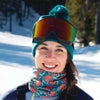Heading out the door? Read this article on the new Outside+ app available now on iOS devices for members! Download the app.
The nationwide protests against racism in the wake of George Floyd’s killing have led individuals and companies alike to take a long, hard look at where they stand on racial equity and inclusiveness. And for those of us in the skiing industry, the inevitable conclusion is an uncomfortable one.
There’s no contesting the fact that skiing is a predominately white sport. People of color are egregiously underrepresented in our sport and industry as a whole. This realization is not new, but in light of current events, it has become too glaring for U.S. Ski and Snowboard President Tiger Shaw to ignore.
On June 8, Shaw penned an open letter to address the organization’s stance on racial diversity and inclusion, admitting that while there have been efforts in the past to make skiing and snowboarding more inclusive, they have fallen short, and it’s time to make the issue a priority.
“It is no secret that U.S. Ski & Snowboard and our sports are historically white and despite many great programs in place, we could use more widespread initiatives for marginalized communities to participate,” Shaw writes. “We could attempt to justify this with excuses, but when you drill down, the core issue is that there has been a lack of broad responsibility to do so.”
To date, only two African American skiers have made it onto the U.S. Ski Team’s national development team. Andre and Suki Horton, siblings from Anchorage, Alaska, raced internationally for the U.S. on the FIS circuit between 1995-2004. Both had hopes of climbing the ski team ranks to one day compete in the Olympics, and their ambitions were fueled and funded by the National Brotherhood of Skiers, the largest African American ski organization in the country whose mission was to send a black skier to the Olympics.
Related: The Color of Skiing
But an injury sidelined Suki Horton. And even with the financial backing of NBS, Andre Horton announced his retirement from racing in 2004 citing the financial strain of the sport.
According to Snowsports Industries of America, access and financial barriers are the two biggest hurdles to participation in skiing—for all participants, but especially for African Americans. While U.S. Ski and Snowboard has made an effort to remove some of those barriers for youth across the country, there remains little focused, grassroots support for the inclusion of underrepresented communities.
“In 2018, we committed to creating an executing a plan to develop a more diverse and inclusive community within U.S. Ski and Snowboard in line with our Mission and Vision, and our Diversity and Inclusion Statement,” writes Shaw.
In his letter, Shaw goes on to list tangible steps the organization is committed to taking to increase diversity within U.S. Ski and Snowboard and their sports as a whole, including working with local Park City and Salt Lake City-based nonprofits as well as national organizations to introduce underrepresented youth to winter sports.
“We will use this moment as a catalyst,” Shaw writes. “We hope to increase and celebrate diversity within the organization, our athletes, members, donors, and our fans across the world.”
